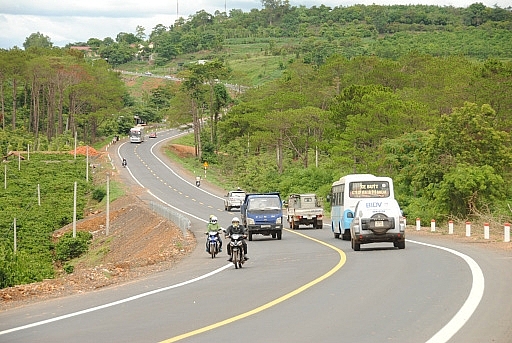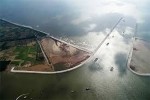Six key transport development schemes to come online next April
 |
| Minister of Transport directed the development of these comprehensive schemes to create better connectivity throughout Vietnam |
This was the request made by Nguyen Van The, Minister of Transport, in mid-November to the Vietnam Road Administration (VRA), Vietnam Maritime Administration (VMA), and Civil Aviation Administration of Vietnam (CAAV).
Accordingly, The asked VRA to build four schemes on transport development for the northern mountainous areas, the south-eastern region, the Mekong Delta region, and the Central and Central Highlands region. The development of the four schemes should be based on transport demand, potential, advantages, development trends, as well as the potential of connecting transport infrastructure with seaports, industrial parks, border gates, and regional economic hubs.
"The schemes must pay attention to the investment model and roadmap, as well as prioritised projects. The schemes should be completed and submitted to the Ministry of Transport (MoT) by April 2019," he ordered.
Minister The also asked the VMA to build a scheme on increasing management and operational efficiency at Haiphong’s seaports, including existing berths and new ones at Lach Huyen International Gateway Seaport.
"VMA must work on the investment model and roadmap, while building a model of port operation management for Lach Huyen International Gateway Seaport," The said.
The minister also ordered CAAV to build a scheme on increasing management and operational efficiency for Long Thanh International Airport – the country's would-be largest airport project in the southern province of Dong Nai.
Once completed, the six schemes are expected to create comprehensive transport links in road, seaport, maritime, aviation, and railway, optimising the advantages and competitive edge of each transport segment, thus greatly contributing to regional socioeconomic development.
Vietnam will need a huge amount of capital for transport infrastructure development in the coming years. The transport sector is likely to get VND200 trillion ($9.13 billion) worth of public investment in 2016-2020, meeting only 30 to 35 per cent of the total need. Thus, calling on domestic and foreign investment through the public-private partnership (PPP) format is very important.
Currently, state funding accounts for 40-55 per cent of Vietnam’s total investment capital for transport infrastructure development. Domestic loans through build-operate-transfer (BOT) project funding make up 30 per cent, and ODA from the World Bank, the Asian Development Bank (ADB), the Japan International Co-operation Agency (JICA), and others accounts for the rest.
State funding and domestic loans are mainly used for the development of national highways and provincial roads. Meanwhile, ODA is disbursed for expressway, airport, and seaport projects – for example, the Long Thanh-Dau Giay, Danang-Quang Ngai, and Noi Bai-Lao Cai expressways, and the Cai Mep, Cai Lan, Lach Huyen, and Danang seaports.
 | Hai Phong Urban Transport Development Project gets longer The PM has approved to extend the Hai Phong Urban Transport Development Project till August 31, 2018. |
 | PM approves additional funding for northern delta transport development The PM has approved the adjustment and supplementation of investment capital for the Day-Ninh Co junction canal category of the World Bank-financed Northern Delta Transport Development Project. |
 | ADB provides $500 million loan for public transport development in Ho Chi Minh City The Asian Development Bank and the Vietnam’s government signed today a $500 million loan agreement for urban transport development in Ho Chi Minh City. |
What the stars mean:
★ Poor ★ ★ Promising ★★★ Good ★★★★ Very good ★★★★★ Exceptional
Related Contents
Latest News
More News
- EVN launches major power infrastructure projects nationwide (December 19, 2025 | 18:17)
- VAL inaugurates second production line to meet domestic animal feed demand (December 19, 2025 | 16:37)
- Sun Group pioneers urban tram system in Phu Quoc (December 19, 2025 | 15:00)
- Seven major projects launched to drive Hanoi’s next growth phase (December 19, 2025 | 14:00)
- Securing capital and efficiency for Vietnam’s 2026-2030 growth ambitions (December 17, 2025 | 10:00)
- Vietnam bucking trend in the global M&A landscape (December 16, 2025 | 14:20)
- HDS Summit spotlights Vietnam’s rising role in regional supply chains (December 16, 2025 | 08:00)
- Kolon signs $48 million airbag supply deal with Autoliv (December 15, 2025 | 18:14)
- National Assembly approves Vinh–Thanh Thuy expressway project (December 15, 2025 | 18:02)
- Quang Tri green-lights $1.59 billion LNG-fired power project (December 15, 2025 | 17:59)

 Tag:
Tag:

























 Mobile Version
Mobile Version